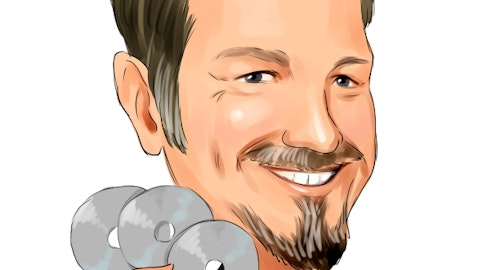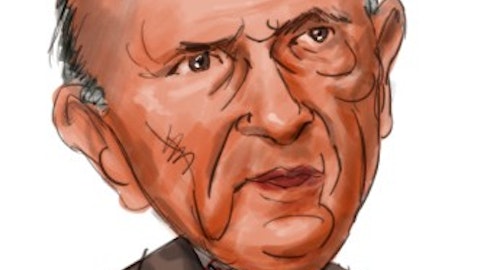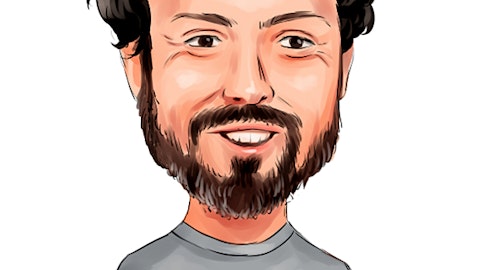![]() Among the 100 wealthiest investors in the world, Ray Dalio cuts an iconic figure in the sometimes cookie-cutter arena of hedge funds and finance.
Among the 100 wealthiest investors in the world, Ray Dalio cuts an iconic figure in the sometimes cookie-cutter arena of hedge funds and finance.
Not only does he manage the world’s biggest hedge fund, Bridgewater Associates, with approximately $140 billion under management, he is also a big-game bow hunter, meditation practitioner, and firm believer in radical honesty. Dalio didn’t earn his $12 billion net worth by following anyone but himself. All investors can learn valuable lessons from this one-of-a-kind billionaire.
Ray Dalio’s Biography
Dalio wasn’t born with a silver spoon and was far from a gifted student, but he learned from an early age to work for what he wanted. The son of a jazz musician and a stay-at-home mom, he knew he wanted spending money. His first jobs were the mundane employment of many suburban youths: He ran a paper route, shoveled snow, and washed dishes in a restaurant.
When he was 12 years old, his life took a turn that would place him on the road to vast wealth: He started working as a golf caddy. Carrying the clubs of businessmen from hole to hole, he overheard much talk about the stock market and investing. Acting on his curiosity, he purchased his first shares of stock. He chose Northeast Airlines because it was the only one he found selling for less than $5 a share. Fortunately for Dalio, the company received a buyout offer resulting in his shares tripling. He was quickly hooked on the market, and the rest is history.

Source: CNBC
His attraction to the market led to attending Harvard Business School. During his summers at Harvard, Dalio traded commodities while landing a job as an assistant to Merrill Lynch’s director of commodities. Next, he worked on Wall Street for two years and in 1975 launched Bridgewater from his New York City brownstone.
Ray Dalio’s Investment Strategy And Big Wins
Dalio is a macro investor who adheres to a strict sense of ethical ideas that create the bedrock for his investing and the way Bridgewater is operated. He lays out these principles in a treatise titled, appropriately, “Principles,” a 123-page manifesto that is required reading for all Bridgewater employees.
Boiled down to its essence, “Principles” teaches readers that they should always think for themselves and that “Truth, more precisely an accurate understanding of reality is the essential foundation for producing good results.” In other words, understanding reality for what it is, not what you think or wish it is, is the fundamental core for living a successful life.
Dalio shared specific investment strategy at the Bloomberg Markets 50 Summit in 2011. He emphasized that when building a portfolio, the ideal number of uncorrelated return streams is 15. Dalio believes that at exactly 15 uncorrelated investments, an investor’s risk factor is reduced by 80%.
In addition, he likes to balance his portfolio between inflation risk and growth. He observes data through the prism of knowing the economic environment. All potential environments are illustrated in this diagram from Bridgewater:

The ideal portfolio is one that does not rely on predicting deflationary shifts yet provides balance. The explanatory report from Bridgewater’s All Weather fund puts this idea is a practical manner:
“Bonds will perform best during times of disinflationary recession, stocks will perform best during periods of growth, and cash will be the most attractive when money is tight. Translation: All asset classes have environmental biases. They do well in certain environments and poorly in others. As a result, owning the traditional equity-heavy portfolio is akin to taking a huge bet on stocks and, at a more fundamental level, that growth will be above expectations.”
Dalio said it best in an interview from Davos with CNBC:
“I think the important thing here if I’m an investor is that the most important thing you can have is a good strategic asset allocation mix.
In other words, you’re not going to win by trying to get what the next tip is — what’s going to be good and what’s going to be bad. You’re definitely going to lose. So, what the investor needs to do is have a balanced, structured portfolio — a portfolio that does well in different environments.”
In other words, diversification within a balanced structured portfolio is the key to Dalio’s investing success. What I find most useful is his saying that despite all its researchers and market experts and spending hundreds of millions of dollars, Bridgewater doesn’t know what’s going to win and what’s going to lose — which is why the firm makes a lot of diversified bets.
Dalio isn’t a speculator who has singular big wins or losses. He makes many diversified bets rather than a handful of all-in plunges.
Ray Dalio’s Portfolio: What’s He Holding Now?
As a macro-oriented fund, Bridgewater has more than 90% of its holdings in ETFs of emerging markets and the S&P 500 index. This breaks down to 33% allocated to Vanguard MSCI Emerging Markets ETF (NYSEARCA:VWO), 30% in the SPDR S&P 500 ETF Trust (NYSEARCA:SPY), and 28% in the iShares Trust (NYSEARCA:AXIT). The most recent stock additions include Boston Properties, Inc. (NYSE:BXP) and Expeditors International of Washington (NASDAQ:EXPD).
Action to Take –> Every investor should take the time to read Ray Dalio’s “Principles.” This manual provides a powerful case for his philosophy and worldview. Regardless of whether you agree or disagree with his overall ideas, there are nuggets of wisdom that can help provide true understanding. In addition, note Dalio’s insistence on the need for diversification within an investment portfolio. He obtains this diversification through ETFs built upon his macro outlook of the economy.
Warren Buffett’s Top 5 Stocks
Buffett’s firm, Berkshire Hathaway, holds dozens of stocks. But these five make up 75% of its portfolio… worth $65 billion. Click here to get Buffett’s top 5 stocks plus his 16 latest buys, FREE.
This article was originally written by David Goodboy and posted on StreetAuthority.





